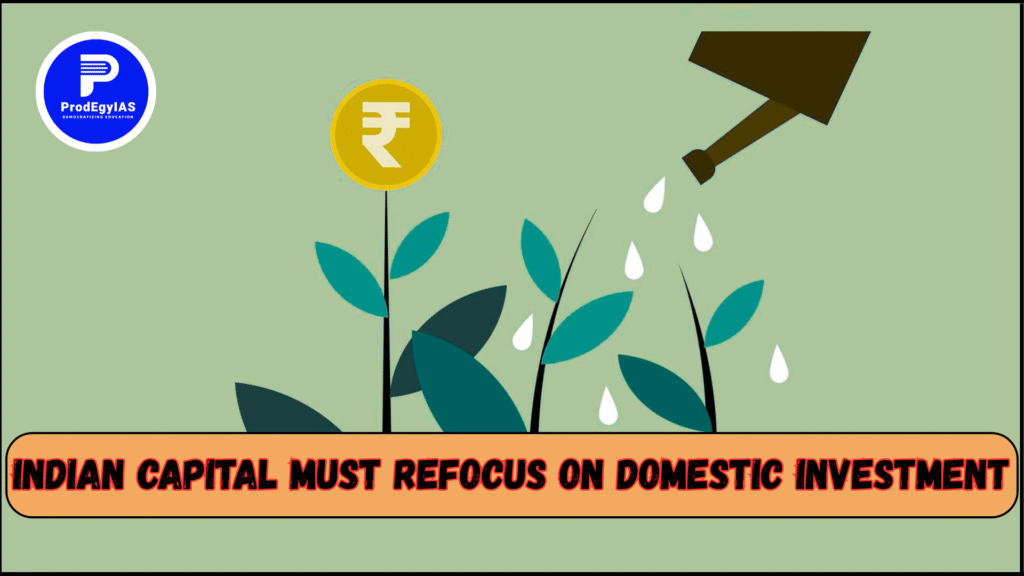
Indian Capital Latest News
Indian Capital Must Refocus on Domestic Investment as analysts point out that sustained economic growth now hinges on bolstering internal demand, job creation, and innovation despite growing global uncertainty. With exports slowing and international markets becoming more volatile, Indian private capital is being increasingly urged to channel its resources toward home investment. The private sector’s contribution to India’s internal growth engine is now more critical than ever to ensure long-term stability and inclusive development.
The Evolving Role of Indian Capital
Indian private capital has been essential to the country’s development for many years. Domestic investors have influenced the nation’s industrial landscape, from establishing core sectors in the early years following independence to driving the wave of globalisation after 1991. Liberalisation made it possible for Indian businesses to compete internationally, acquire assets, and grow outside.
Recalibration is necessary, nevertheless, given the new global order. International markets are now less dependable due to shifting supply chains, trade disruptions, and rising geopolitical tensions. In order to support internal growth, generate employment, and achieve India’s goal of being a $10 trillion economy by 2036, Indian capital must now shift its attention back to domestic reinvestment.
The Need to Refocus on Domestic Investment
Public investment has played a major role in India’s recent prosperity, whereas private sector capital expenditure has remained muted. From ₹3.4 lakh crore in FY20 to ₹10.2 lakh crore in FY25, the government’s capital expenditure grew at a rate of about 25% each year. However, private investment as a percentage of GDP has remained constant at roughly 22–23%.
Meanwhile, despite a slowdown in global FDI, Indian companies have boosted their outbound FDI by more than 12 percent each year over the past five years. This trend indicates that opportunities outside are preferred over those in India. A stable policy system, growing infrastructure, and solid macroeconomic foundations have made domestic reinvestment both profitable and strategic.
Driving Inclusive Growth through Wage Expansion
Real wage growth has been slow in India, despite corporate earnings hitting a 15-year high. The disparity between stagnant household income and growing profits has hindered inclusive growth and restricted consumption. Despite ongoing improvements in productivity, real salaries are only expected to increase by 6.5 percent in FY26.
Businesses must guarantee consistent pay increases and employment creation for growth to be widespread and sustained, especially in labour-intensive industries like manufacturing, textiles, and services. A self-sustaining economic cycle is created when salaries are raised since this boosts domestic consumption, which in turn encourages investment and output.
Boosting Private Investment and Innovation
India’s industrialisation has traditionally relied heavily on private investment, but in recent years, corporate prudence and international unpredictability have restrained capital expenditure. However, the current policy environment is one of the best in decades. The corporate tax rate has been lowered to 22%, while the new manufacturing unit tax rate is now 15%. The fourteen-sector Production-Linked Incentive scheme provides incentives worth ₹1.97 lakh crore. Additionally, significant advancements have been achieved in digital infrastructure, logistics, and ease of doing business.
In addition to established industries, Indian companies can take advantage of these conditions to increase domestic capital investment in emerging industries including digital technology, semiconductors, renewable energy, and electric mobility.
Strengthening India’s Innovation Ecosystem
India spends only 0.64 percent of its GDP on research and development, while developed nations like the US, Japan, and South Korea spend 2 to 3 percent. Only around one-third of this expenditure is made by private companies, compared to more than 70% of R&D spending in developed countries.
Indian companies need to make much greater investments in innovation if they want to stay competitive in the global market, particularly in fields like biotechnology, artificial intelligence, industrial technology, and green energy. China and South Korea serve as examples of how persistent private sector innovation, bolstered by governmental policy, may turn developing nations into centres of advanced manufacturing.
Aligning Private Capital with National Priorities
How well private capital fits with government economic goals will determine India’s long-term growth. Through policy stability, fiscal restraint, and infrastructure development, the government has established a solid basis. To guarantee balanced regional growth, the private sector must now reinvest locally rather than seeking acquisitions abroad, work with government initiatives like the government Infrastructure Pipeline and Green Energy Mission, and make investments in tier-two cities and emerging states.
India’s growth momentum in recent years has been driven by public investment, but private capital must take the lead in promoting productivity and innovation if the country is to make sustainable success.
The Path Ahead
The economy of India is at a pivotal juncture. With record infrastructure investment, robust foreign exchange reserves, and GDP growth that has continuously surpassed 7%, the nation is well-positioned for an economic revolution. Public spending must be accelerated and complemented by private investment to maintain this trajectory.
Concentrating on home markets will increase independence, lessen susceptibility to outside shocks, and open up new pathways for innovation and employment. In addition to securing superior long-term profits, domestic investments help make the Indian economy more resilient and inclusive.
UPSC General Studies Paper Preparation
| Topic | |
| UPSC Syllabus | UPSC Free Notes |
| UPSC Optional Subjects | Khushhali Solanki (AIR 61, UPSC CSE 2023) |
Public Administration Optional Exam Preparation
Topic | |
About the Author: Jyoti Verma



